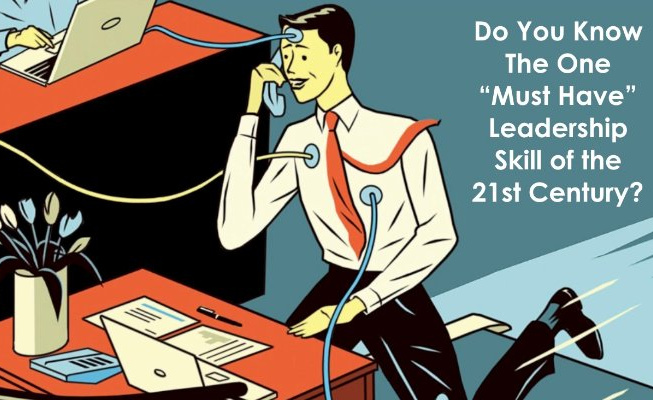Foresight: The Most Important Leadership Skill of the 21st Century

Leadership qualities tend to be timeless. It’s why we look back through history at the esteemed individuals who led successful businesses, governments and social initiatives. The thinking goes that, if we can emulate these trailblazers, we will be successful leaders too.
However, something fundamental has changed.
Throughout history, we have never seen the volatility, complexity and transformation that we are seeing today. As innovation pioneer Peter Diamandis has noted, “The first technological steps — sharp edges, fire, the wheel — took tens of thousands of years. Now, paradigm shifts occur in only a few years’ time.”1
Of course, the exponentially accelerating speed and magnitude of change is not relegated only to technology. The unprecedented shifts seen in population decline, climate change, decentralized learning, experiential consumption and many other areas are changing the landscape of work, education and our daily lives.
Enter today’s leader, an individual with an even greater need to grasp the nature and impact of change than all of those amazing women and men who made their mark on history.
You can search the web for the most important leadership skills, and you will find many wonderful and proven qualities: honesty, delegation, collaboration, empathy, inspiration, confidence and more. However, this advice was formulated during a time when governments, industries, businesses and people reacted in a much more consistent fashion.
In many ways, today’s leader has no precedent or benchmark for the skills that will help them succeed.
With uncertainty and volatility affecting every aspect of our lives and organizations, it’s clear that we must address these aspects of the 21st Century. The most important leadership skill is therefore the ability to effectively manage, harness and leverage the constant change around us — and this can be done through foresight.
According to famed futurist Richard Slaughter, foresight (also known as futures thinking or futuring) is “the ability to create and maintain a high-quality, coherent and functional forward view, and to use the insights arising in useful organizational ways.”2 In other words, foresight is a way to examine the paths the future might take, using qualitative and quantitative metrics, and then use the insights gained from this analysis to navigate our uncertain and changing world with purpose.
Wall Street Journal columnist Christopher Mims expounded on the importance of foresight for today’s leaders:
“The art and science of futuring is fast becoming a necessary skill, where we read signals, see trends and ruthlessly test our own assumptions…Like the ability to make a budget or think critically, it’s a skill that anyone who has to make long-range decisions should, and can, acquire.”3
As Mims implies, success in the 21st Century means being continually adaptive and transformative. Foresight helps us transition from a position of reactive disruption to proactive transformation. It shows us where our organization is headed, and how we can successfully arrive.
Here are three ways you can start to learn the skill of foresight:
1. Question your assumptions and biases
Make a conscious effort to notice your own biases — question your gut reaction to news, ideas, information and people. Learn from yourself, and examine the roadblocks you’re naturally putting up. What might you be missing? What’s another perspective you can imagine? Talk to others and learn from their biases too, especially teenagers!
2. Scan from the outside in
As a leader, you’re already seeking out news and information that might affect your work and your industry, but that’s not enough. You need to look outside of your industry to discover the ideas and innovations that might disrupt your organization — or provide a great opportunity. Pick up a magazine from an unrelated industry. Follow someone on Twitter who focuses on topics you’re normally not interested in.
3. Be provocative
The natural next step of scanning is to use your imagination. Challenge yourself to think of provocative implications of ideas, innovations and events. Connect the dots between seemingly disparate pieces of information. Think provocatively — as said by legendary futurist Jim Dator, “any useful idea about the future should appear to be ridiculous.” In 20, 30, 50 years, what might happen because of a trend we see today? If you are afraid to let your mind wander, you’ll never find yourself at the leading edge.
Sources:
- https://www.huffingtonpost.com/peter-diamandis/why-tech-is-accelerating_b_8951550.html
- Slaughter, R. (1995). The foresight principle. Westport: Praeger.
- https://www.wsj.com/articles/think-like-a-futurist-to-be-prepared-for-the-totally-unexpected-1483272006

